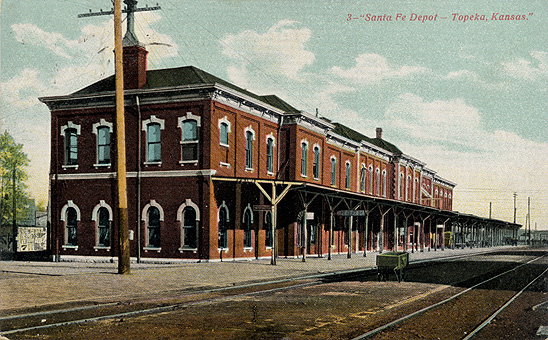|
||||||||||||||
|
We arrived in Cherbourg at 3:08 PM and transferred to the tender,
arriving alongside the SS Republic at 6:00 PM. Shortly after
arriving onboard, the ship sailed.
Mrs. Emma Susan
Harper, a native of
South Carolina,
passed away on
November 16, 1940 at Eustace, Henderson County, TX and was
buried there. Her son, Willie Wiley Harper was born on Mar 16, 1890
in Newton County, MS. He was a Private, U.S. Army, 38th Infantry
Regiment, 3rd Division. He entered service from Mississippi and died
October 9, 1918. He is buried in Plot C Row 27 Grave 9 at Meuse-Argonne
American Cemetery, Romagne, France. |
||||||||||||||
|
Originally built in 1907 as the USS President Grant, an 18,072 gross ton passenger liner, at Belfast, Ireland, for the Hamburg-Amerika Linie. She shared a distinctive split-superstructure and six mast configuration with her sister ship, the President Lincoln. After seven years of commercial operation, she took refuge at New York when the August 1914 outbreak of World War I made the high seas unsafe for German merchant ships, and remained inactive until the United States entered the conflict in April 1917. Seized at that time, by the U.S. Government, she was turned over to the Navy and, in early August 1917, placed in commission as the transport President Grant (later given registry ID # 3014). During the rest of the First World War, she made eight round-trips across the Atlantic, transporting nearly 40,000 passengers (mainly U.S. troops) to the European war zone. Following the 11 November 1918 Armistice, President Grant brought home over 37,000 war veterans and other persons in the course of another eight round-trip voyages. She was decommissioned in October 1919 and transferred to the U.S. Army.
In 1920-1921 the ship served briefly as an Army transport, and in 1921 was returned to the U.S. Shipping Board and laid up. She was renamed President Buchanan in 1922 or 1923, then renamed Republic and rebuilt with an enlarged superstructure and oil-fired boilers.
In 1924 she was then placed in commercial operation by the United States Lines. In 1930 she was one of several American flag ships that participated in the Gold Star Mothers pilgrimage to France.
In August 1931 Republic was transferred to the War Department and resumed service as an Army transport. For the next ten years she was mainly employed on the route from New York to Hawaii, by way of the Panama Canal and San Francisco, California, but on occasion steamed further west to deliver troops and other passengers to the Philippines, China and Japan.
The Navy took her over in July 1941, placing her in commission as
USS Republic (AP-33). Later in that year she made a voyage to
Iceland, then went to the Pacific and Australia. In January 1945
Republic was returned to the Army. Converted to a hospital
ship, with no change in name, her re-entry into service was delayed
by major repairs to her machinery, and she did not begin her next
trans-Pacific voyage until late 1945 or early 1946. While at sea
between Honolulu and Manila in February 1946, she was once again
assigned to Army transport service. With her hospital ship markings
painted out, she brought war veterans home from the Philippines,
arriving in San Francisco in March 1946. USAT Republic was
placed in the Olympia, Washington reserve fleet in May 1949 and sold
for scrapping in March 1952. |
||||||||||||||
|
|
||||||||||||||
 |
||||||||||||||
|
|
||||||||||||||
|
||||||||||||||
|
|
||||||||||||||
| The End of the Journey |













